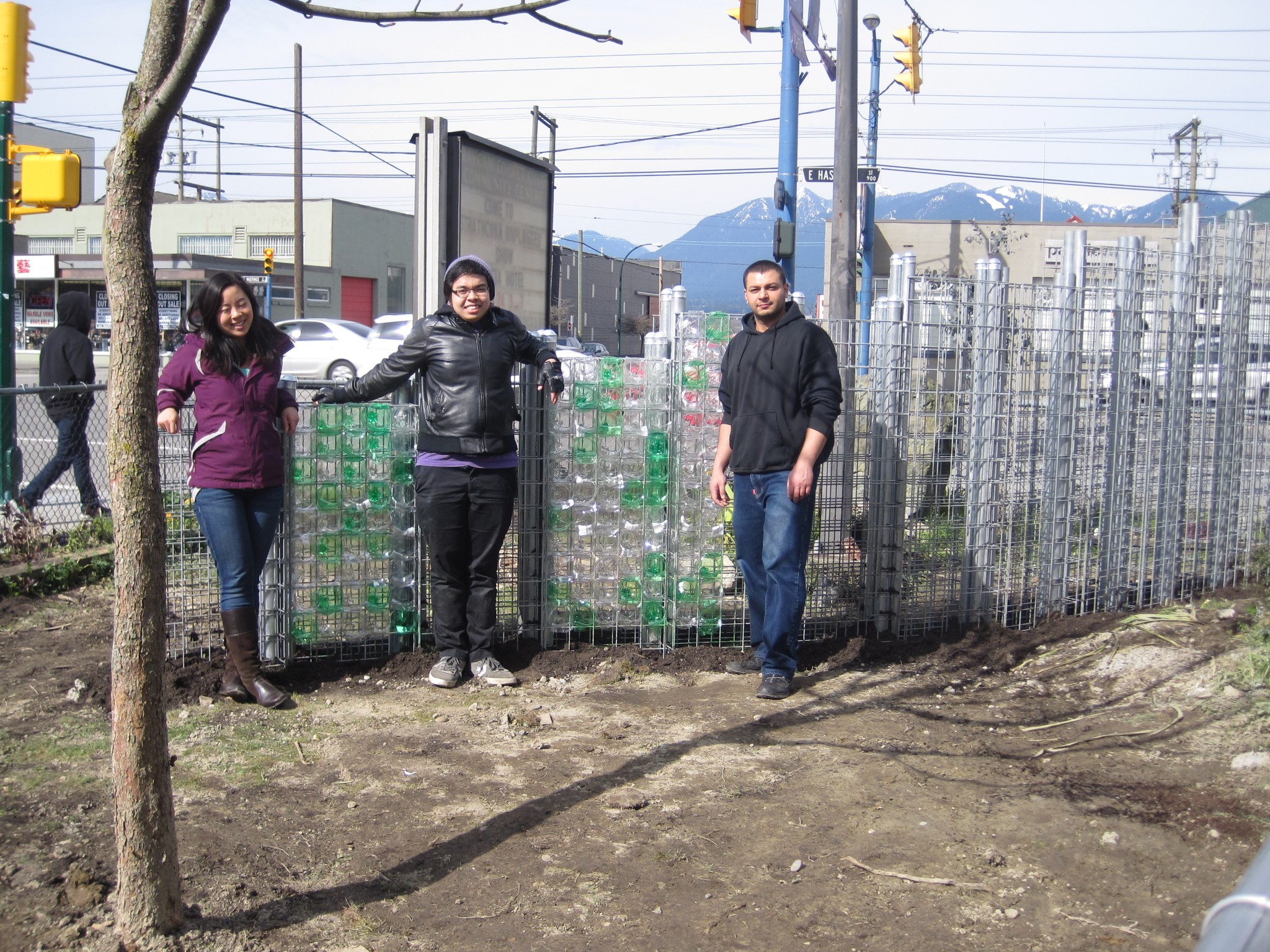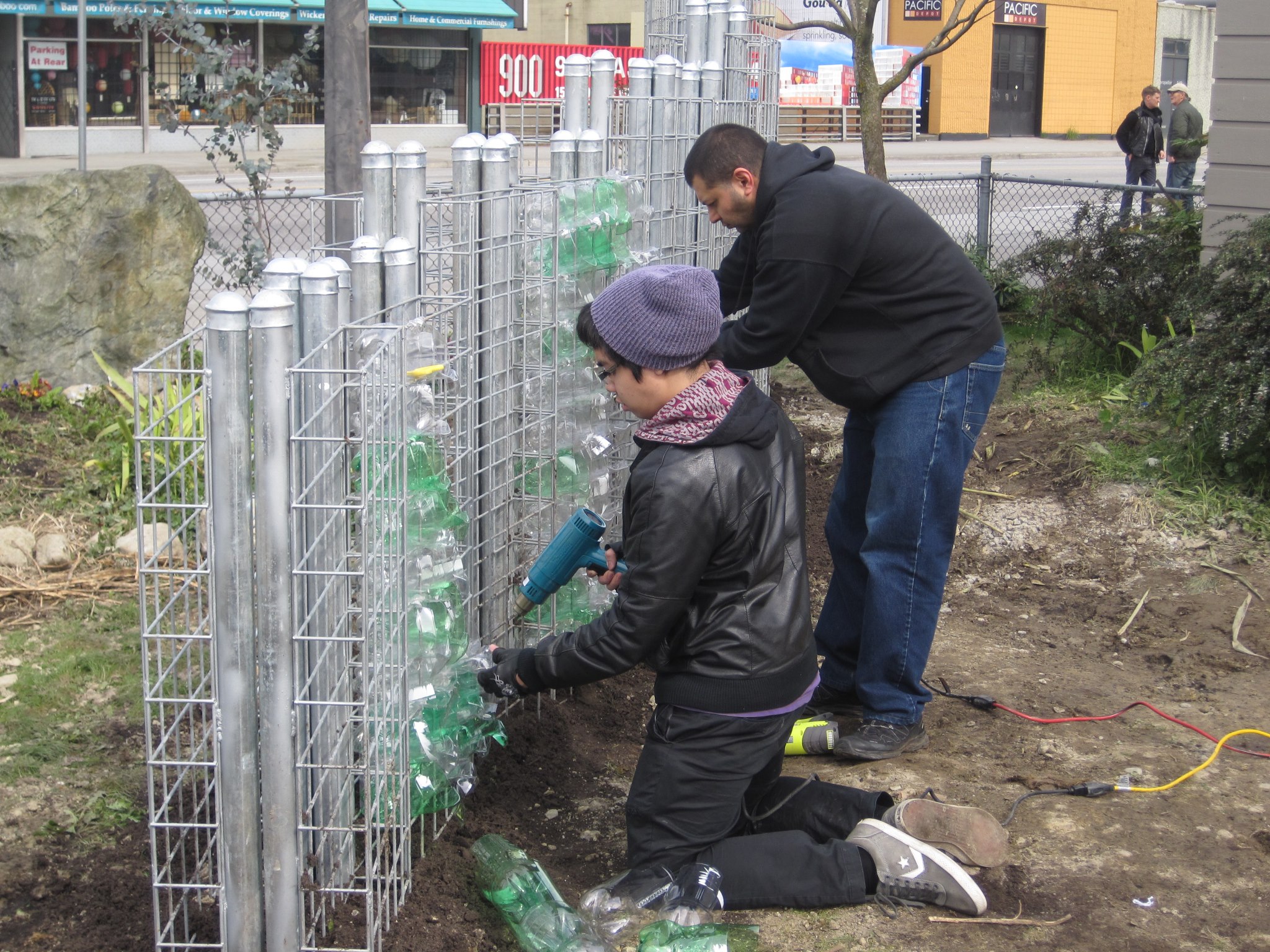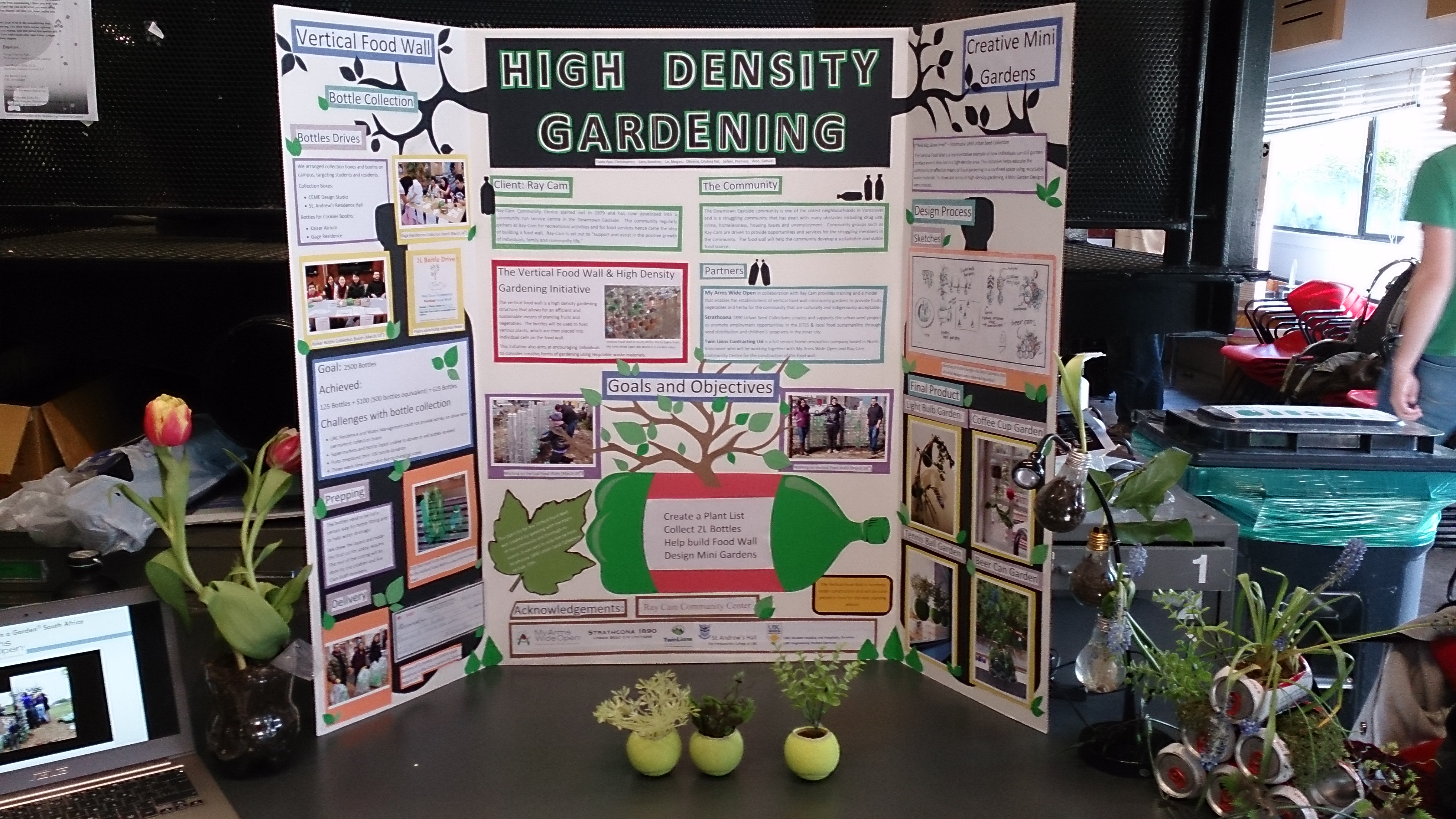As the school semester is coming to a close, we have been busy wrapping up our project. Major tasks completed during the past two weeks include installing pop bottles on the food wall at Ray-Cam and holding our poster presentation at the Civil Engineering Design Studio.
Bottle Installation
On Sunday March 24th, we helped attach bottles to the food wall at Ray-Cam. The food wall has already been built and is just awaiting the installation of bottles. We cut the 125 bottles that we collected and used heat guns to secure them into place on the caged wall. The pictures below show the current progress of the food wall.
Poster Presentation
Monday March 25 was the day of our poster presentation. We found that many people were drawn to our poster and were curious about our project. We had the chance to speak to a few professors and other guests. The miniature gardens attracted a lot of attention and attracted many people to our group. We tried to promote high density gardening, which was the main idea behind the vertical food wall. By giving people some insight on gardening efficiently and sustainably, we hope that high density gardening will become a trend that many will follow.
Project Summary
It has been three months since we first started the project. During this time, we experienced a lot of changes throughout the course of the project and also made many achievements along the way. Our achievements, contributions, and hardships are described as follows:
Achievements and Contributions
Our team has made four major project achievements: creating a plant list, collecting 2L bottles, helping build the food wall, and designing miniature gardens.
One of our firsts tasks was to create a plant list that would suit Vancouver’s weather and the community’s taste. We came up with a long list of fruits and vegetables that would allow for each specific growing season to ensure a constant supply of food for the community.
Another major task for our team was to collect 2L pop bottles for the vertical food wall. By asking everyone we knew and holding two bottle collection drives at UBC, we were able to collect a portion of the needed bottles for the food wall. In addition we collected donations, which are going to be used to purchase the remaining bottles. Having collected numerous bottles, we helped Ray-Cam install them on the food wall.
Finally, we were asked to promote high density gardening. We came up with a few designs that encourage gardening in efficient and sustainable ways. All of the miniature gardens that we designed and built were made from recyclable materials. These miniature gardens display the convenience of growing vertically in small places such as apartments. Furthermore, by educating guests about this during our poster presentation, we hope to induce some interest in the community for their plants in their households.
Hardships and Lessons Learned
The major hardship that our group experienced during this project was the unclear scope. Our team unfortunately had a change in scope several times. This decreased time for project implementation, which led to a few compromises. The main compromises were made in the bottle collections and food wall construction, which were both very time dependent tasks.
Through this experience, we have learned the importance of effective communication. Email was the primary medium of communication, which often led to inefficiency due to late replies. Other times, unintentional emails were sent to our team, which caused lots of confusion. The message to take out of this is that emails can be used as a convenient way to communicate between others, but professionalism should still be maintained. Other forms of contact included telephone calls. We generally found this to be best way to communicate, but we always had to be wary of when we made phone calls to ensure that we did not interrupt other people’s busy schedule.
As for project management, we believe that we have done a decent job given the tight time constraints. We made sure that we met at least once every week to keep everybody updated on the project. By holding these weekly meetings, we were able to discuss our upcoming plans of action to accommodate the tight schedule. Goals were set and documented by the end of every meeting to help keep us on track. By doing this, we made sure that time was not wasted and that we remained efficient.
During project implementation, we did our best to stick to our original goals. However, we encountered challenges, which led to minor changes. Most changes that were made had a positive impact on the project as previous goals and tasks were no longer feasible. By making these quick changes, we found that our results became more concrete and beneficial to the overall project.
We will definitely take this great learning experience into consideration for our future projects. The main things that we learned from the Vertical Food Wall project was that communication must be effective and professional, and that we should always be willing to adapt to changes throughout the project.
The Vertical Food Wall team would like to express our gratitude to Dr. Susan Nesbit for providing us with such a great opportunity to help out the community. We hope to use our engineering knowledge to aid the public in the near future!
Thank you for reading!



